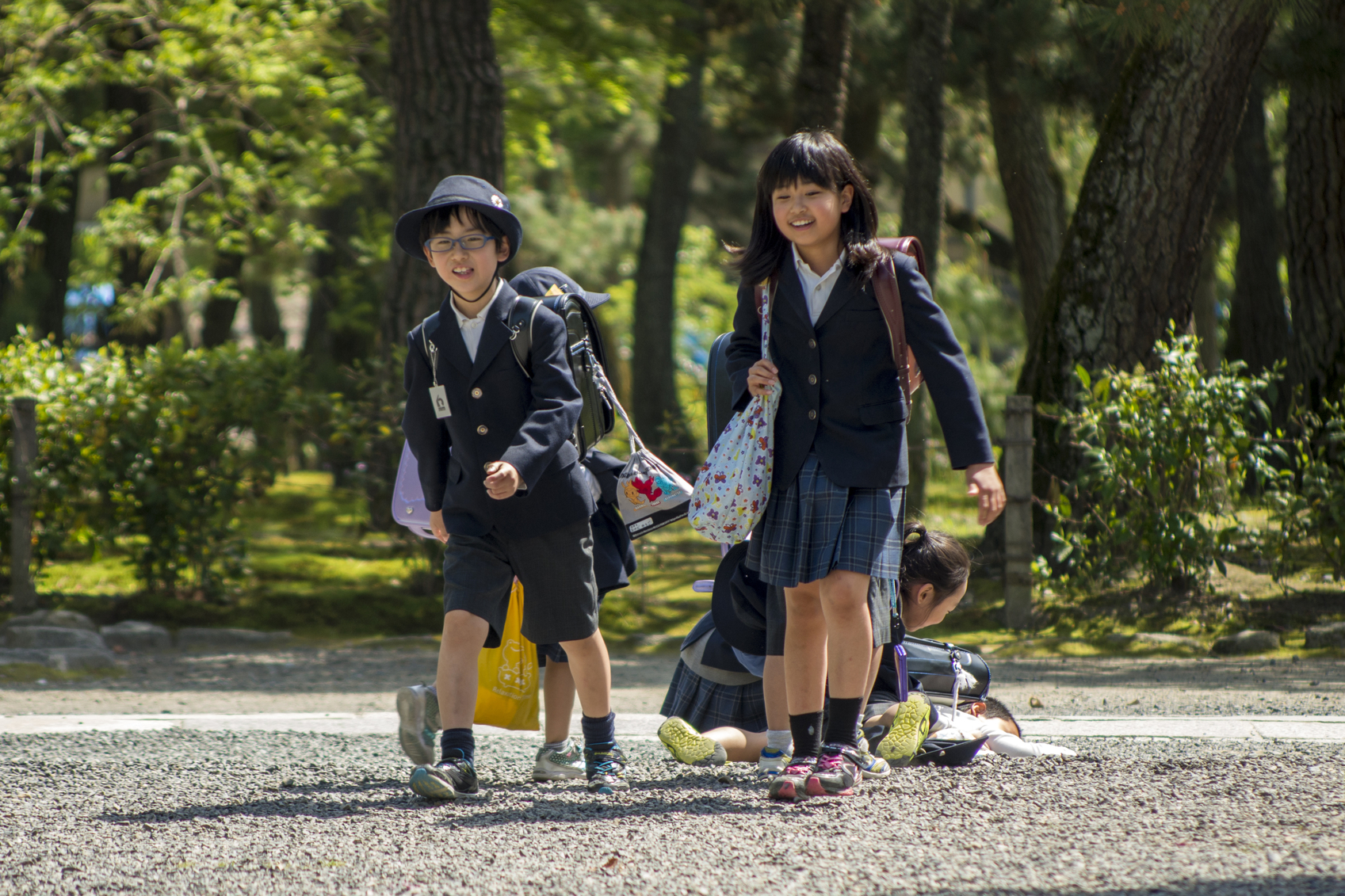How Japan Prepares Its Children for Independence
Early Life Lessons
How field trips and walking to school are simple first steps in teaching children the lifelong skill of independence.
Last week, my two-year-old son took a ‘secret’ field trip. His yochien (preschool) packed up all of their child class students, took them on a bus, and would not tell us where.
When we learned about the plan, the other American parents and I looked at each other in excited disbelief. “This would never happen in America,” we whispered, conscious of the mountains of forms and waivers that would have been deemed necessary back home for such a trip. Yet we weren’t horrified or worried. We were delighted.

The reasoning behind the ‘secret’ field trip was simple: this was the children’s first adventure without their parents. The yochien did not want us moms to show up, one of the other mothers laughingly translated for us. They joked that one or two of us might sneak to the park to watch this first solo outing, and it was important that the children take this small step toward independence alone.
Next year, my son—at three—will ride the bus to yochien by himself.
Next year, my son—at three—will ride the bus to yochien by himself. By five and six, Japanese children often take public transit or walk to school without their parents.
My mother, back in America, was horrified when she heard this. “They walk by themselves? The whole way? He’s far too little for that,” she said, when I mentioned it off-hand.
Yet to an outsider like me, Japan does an excellent job of preparing its children for independence, in a way that America—with its love of helicopter parenting and loathing of ‘free-range’ parenting—often does not.

Learning to Let Go
It begins slowly. Our yochien eased us into the transition of attending school, even though the toddlers only attended one or two days per week. It was still an adjustment, and the school treated it as such. The moms attended the first several days of class, and the first field trips. When the children finally attended their first solo day of class, nearly a month had gone by.
With only 1.7% of Japanese schoolchildren riding a bus (according to research from the American-based Safe Routes to School National Partnership (SRTS)), and some schools banning cars from doing drop-offs, walking to school is often a necessity in Japan.
And it is in this way, bit by bit, that Japanese children build up independence. With only 1.7% of Japanese schoolchildren riding a bus (according to research from the American-based Safe Routes to School National Partnership (SRTS)), and some schools banning cars from doing drop-offs, walking to school is often a necessity in Japan. Yet children aren’t simply shown the door and expected to find the way to school by themselves. Independence is a skill taught through weeks of practice: learning the route holding the hand of a parent, meeting the shop owners along the way, navigating the landmarks with a parent following a block behind. It’s making sure the children not only know how to do it, but also know how to do it safely.
Trusting the Community
Most importantly, the wider community in Japan also helps foster children’s independence. Neighbors who see children walking or playing alone don’t call the police, nor do the police arrest the parents. Instead, they help.
When the SRTS sent its deputy director to Tokyo in 2011 to learn about Japanese methods, among their findings was that community participation was crucial in helping the system work as well as it does—and in helping parents feel confident in letting their children go.
The route to school for a Japanese child often includes volunteer crossing guards, signs designating safe shops and homes in case of emergencies, and even neighborhood chimes reminding playing children to head home at dark. In this way, everyone pitches in to ensure children can be both independent and safe, providing a framework to allow them freedom.

Responsibility Comes One Step at a Time
This bit-by-bit approach to independence in Japan also applies to responsibility. In our post-class update at the end of the first day, the sensei mentioned that some of the children were having trouble cleaning up after playtime.
“They say, ‘my mom does that,’” she told us, and we all laughed. It was a friendly admonishment. From now on, we made sure our toddlers were responsible for cleaning up after themselves at home, and yochien would reinforce this by teaching them to clean at school. After all, by elementary school, the children might be cleaning the entire school themselves, in another example of learning self-reliant skills that benefit everyone.

Independence is a Lifelong Lesson
These are lessons I’ve taken to heart. Independence is a journey, and instilling these skills early and often gives children the confidence they need to master not only simple tasks like walking to school, but also the progressively more difficult challenges life will throw their way. It’s a small step in helping children grow toward a successful adulthood.
Japan helps its children master each of these steps, giving them opportunity and motivation to succeed at independent tasks throughout their lives. Another milestone for families—which has since also become a popular television program—is called Hajimete No Otsukai (My First Errand), where children around age four are assigned to complete a task for the family such as buying groceries. Running an errand—alone—is yet another small thing that helps foster the skill of independence.
And it all begins—at least in our case—with a ‘secret’ field trip. To, I later found out, a playground right around the corner from our home, where my son had played countless times before… under my supervision.















